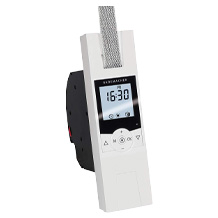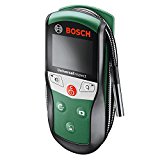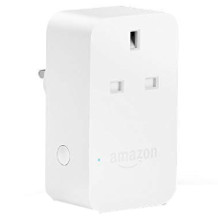Inverter generator purchasing advice: how to choose the right product
- The most important facts in brief
- Inverter generators are generators that use petrol or diesel fuel to produce electrical energy.
- They differ from ordinary generators in that they produce electricity without voltage fluctuations.
- They can run sensitive electronic loads such as televisions or computers.
- Low engine speeds enable them to run on little fuel. This makes them economical from an economic and ecological point of view.
- The devices are portable and are therefore suitable for camping, for example.
What is an inverter generator?
An inverter generator is a device for mobile power generation. It provides electricity even where there is no power socket nearby. This makes it a useful helper when camping, on a building site or on a second property.
The big difference to an ordinary generator is that an inverter generator can produce electricity without voltage fluctuations. This makes it suitable for sensitive electrical appliances such as laptops or televisions, which could be damaged if operated with a conventional generator.
The mobile power station can be used wherever high-value devices such as televisions, satellite receivers, laptops, refrigerators or microwaves are operated. This is the case, for example, in mobile homes, caravans and converted vans, or even on small construction sites when, for example, a light pole needs to be supplied with power.
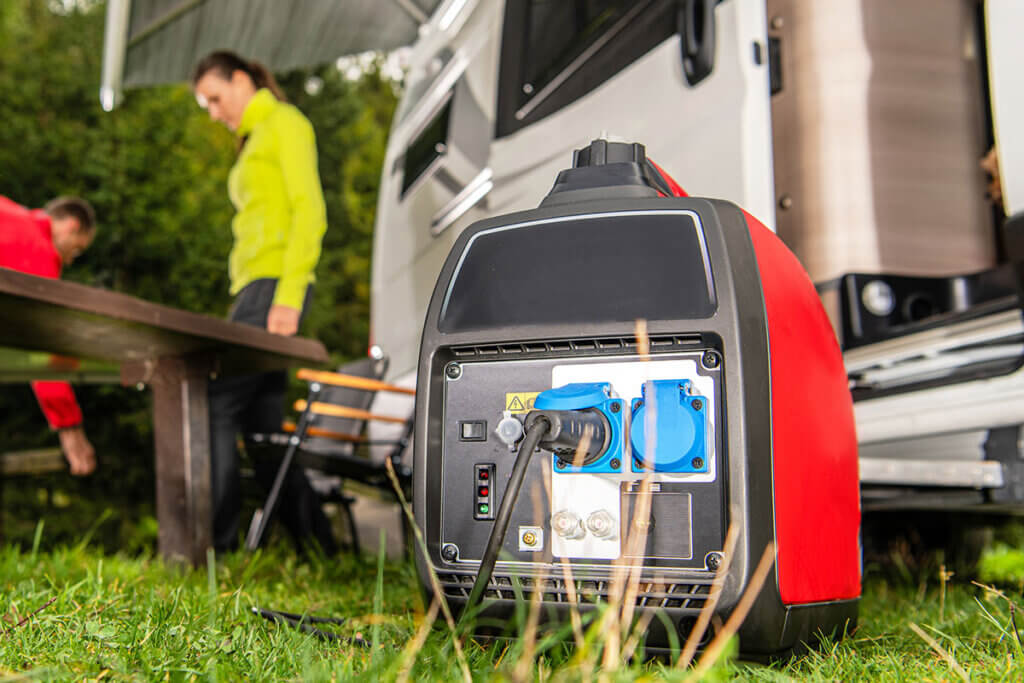
How does a conventional generator work?
For a conventional generator to produce alternating current at 230 volts and a frequency of 50 hertz, the combustion engine must run at a constant speed. For many generators, this is 3,000 revolutions per minute. This corresponds to 50 revolutions per second – or 50 hertz for the electricity generated. A big problem with conventional generators is that the motor cannot keep the speed stable. If the speed drops, the voltage falls below 230 volts and the frequency below 50 hertz. If the speed increases above 3,000 revolutions, an overvoltage occurs. Conventional gensets are therefore not able to deliver “clean” electricity without fluctuations. This can cause damage to sensitive electrical appliances connected to conventional power generators – and always when the tolerance values of the electrical appliances are exceeded.
Caution: Use outdoors only
Never use petrol-powered generators indoors. The escaping carbon monoxide can cause fatal accidents.
Advantages: Constant frequency and voltage
Inverters are somewhat more complex in their operation than conventional gensets. Like normal gensets, they consist of a motor, a generator and a tank for petrol or diesel fuel. They also have a rectifier and an inverter. The generator produces high-frequency alternating current, which is converted into direct current in the rectifier. In the final step, this direct current is converted back into alternating current by the inverter that gives the generator its name.
In modern emergency gensets, the generator and the motor are decoupled from each other. This means that the gensets can supply electricity of a constant quality regardless of fluctuations in speed.
The generated electricity has the same quality as energy from the socket. It is “clean”, i.e. free of voltage fluctuations, and thus also suitable for sensitive electrical appliances. In addition, the inverter models are very economical in consumption because they adjust the speed of the motor exactly to the required power. In contrast to a conventional generator, a generator with inverter technology only produces as much power as the plugged-in appliances consume.
Example of speed control
Assume that only one television is connected to the inverter. This is considered a small consumer with a low wattage consumption – it only needs a small amount of electricity. The motor of the inverter is automatically throttled down to 800 revolutions per minute. This enables fuel- and money-saving, environmentally friendly and low-noise operation. This results in longer running times with the same amount of fuel.
Which appliances cannot be connected to an inverter generator?
Electrical appliances with large electric motors that have a large flywheel mass and therefore require a lot of starting current cannot be operated with an inverter generator. These include, for example, pumps, high-pressure cleaners, drills, electric lawnmowers and power or circular saws. Instead, choose a conventional, asynchronous power generator with high output for operation. For these appliances, multiply the rated power by a factor of three to six to estimate the required power of the generator. Very old electric units require up to ten times the rated power to start.
Example of a high power requirement at start-up
If you want to connect a drill with an output of 500 watts to a conventional generator, the maximum output of the unit should be 3,000 watts. Otherwise, you may not be able to start the drilling machine despite the rated power being significantly below the maximum power due to the power peak during start-up.
The following table summarises the advantages and disadvantages of inverter generators compared to conventional generators:
Pro points
- No voltage fluctuations
- Flexible applications
- Long running times
- Quiet operation
- Clean power generation
- Low fuel consumption
- Low dead weight
- Compact dimensions
- Easy to handle
Drawbacks
- High purchase price
- Less power
- Not suitable for all electrical appliances
- Rarely upgradable
- Components not interchangeable
- Less power than desktops
What matters when buying
When looking for a suitable power generator, a number of purchase criteria need to be weighed up. Decisive, for example, are the power, the size of the fuel tank and the fuel consumption per hour. These criteria influence how long the inverter generator can be operated continuously and without refuelling.
Continuous and peak power
Continuous power refers to the power, specified in watts, that can be drawn from the generator over several hours. The level of this rated power determines how many and which consumers you can connect to the generator. Entry-level models deliver 1,200 to 1,700 watts. Inverter units of the upper class are capable of delivering 2,000 to 3,000 watts.
Different units for the power rating
The power is often stated in kilowatts (kW). 1,000 watts correspond to one kilowatt. The unit of measurement volt-ampere (VA) is also used for the apparent electrical power of a generator to indicate the connected load. Its value corresponds to the watt specification. 1,700 watts (W) correspond to 1.7 kilowatts (kW) or 1,700 volt-amperes (VA).
When deciding what to buy, you should roughly estimate the amount of wattage you want to consume, for example, while camping. Devices with a high power consumption include
- Air conditioners,
- power tools,
- cleaning equipment,
- coffee makers,
- microwaves,
- hoovers or
- hair dryers.
Due to the constant voltage, however, the inverter units are also suitable for sensitive small consumers such as
- Computers and laptops,
- fax machines,
- printers,
- scanners,
- radios,
- small chargers for smartphones and charging cradles,
- monitors and
- televisions.
If the total power consumption of the connected loads exceeds the specified continuous power, the gensets can compensate for this for a certain transitional period by automatically increasing the speed. How long this peak power can be delivered can be found in the specifications of the respective power generator. The continuous output can be used for an unlimited number of operating hours per year. For peak power, there is usually an upper limit to the number of operating hours per year before the engine must be professionally serviced. High-performance operation can have a negative effect on the service life of the generator.
Displacement
The displacement of a petrol or diesel engine indicates, as in a car, how much air and fuel can be compressed and utilised in one piston stroke. The size of the displacement, given in cubic centimetres (cc), is an indicator of the power unit’s performance as well as its fuel consumption. For inverter power generators, the cubic capacity ranges between 80 and 250 cubic centimetres. However, the more important data for the purchase decision are the continuous output and the peak output in watts.
Speed and eco mode
The speed per minute also determines the maximum power. For most inverter models, it varies between 3,000 and 5,000 revolutions per minute. With an inverter generator, it is advisable to choose a model with a higher speed: After all, most models regulate the speed down according to the power called up when Eco mode is switched on. A higher performance therefore increases flexibility – and that with adapted, economical operation.
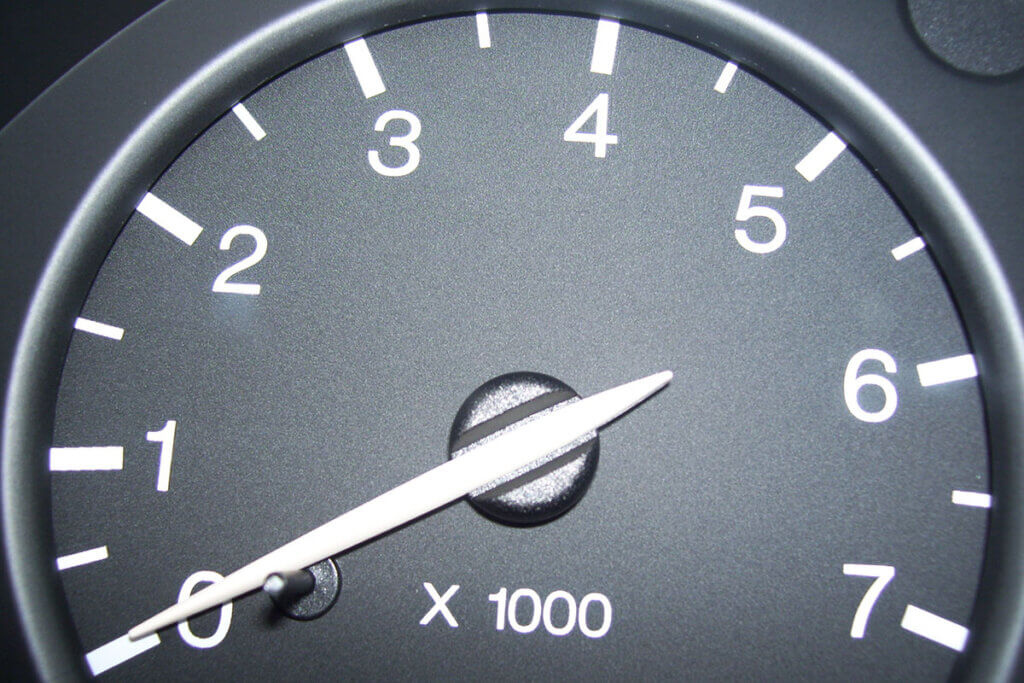
Type and number of connections
The type and number of connections on the genset determine how flexible you are in using the power generators and how many and which electrical appliances you can connect. The most common are the classic 230-volt sockets that you know from the household. Most inverter generators are equipped with one or two of these sockets.
More consumers? Multiple socket!
If you want to connect a larger number of appliances to the generator, you can use a multiple socket. However, make sure that you do not exceed the permissible wattage of the multiple socket or the power of the generator.
12-volt and USB outputs
Some models have a 12-volt output. Here you can connect consumers that are operated from the “cigarette lighter” in the car. For example, navigation devices or special chargers for smartphones. USB outputs are rare but nevertheless practical: smartphones or powerbanks, for example, can be charged with energy via USB cable at these outlets. The actual charger, which is connected to the socket, is not necessary for this.
Can an inverter generator supply high voltage current?
You will not find any high-voltage current or 380-volt sockets on inverter models. If you need heavy current, you will have to look for a conventional, more powerful generator.
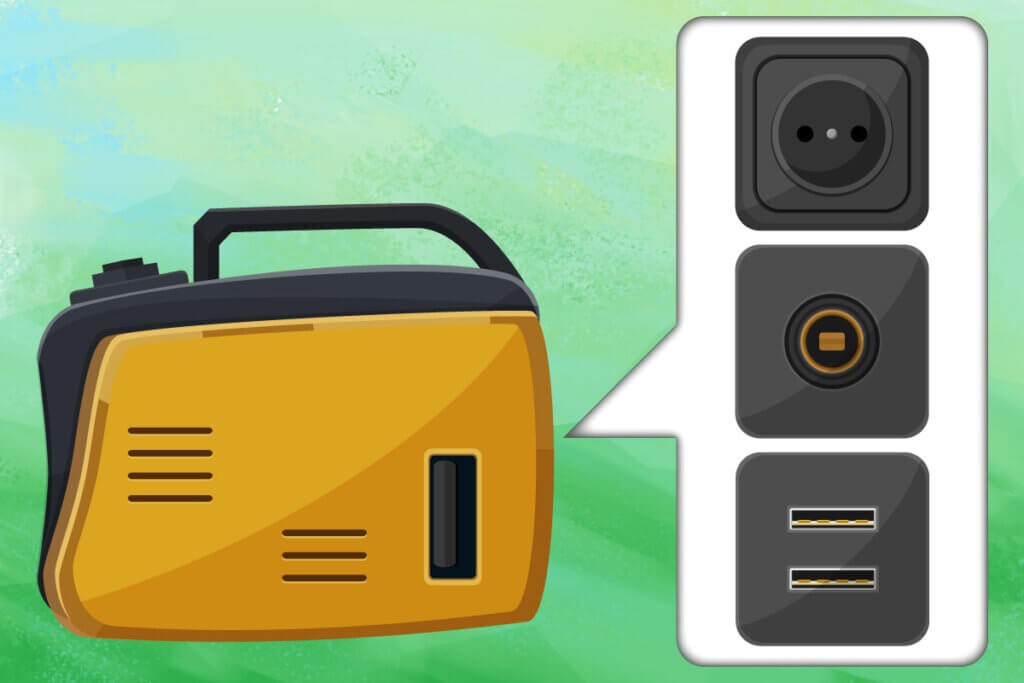
Fuel tank capacity in litres
The size of the fuel tank is given in litres. The more fuel that can be filled into the unit, the longer the operating time – depending on the speed. Bear in mind, however, that large, full tanks make handling more difficult. Common tank capacities range from three to seven litres.
Operating time in hours
Information on the operating time with one tank filling varies between four and ten hours. It is sometimes difficult to compare running times. Some manufacturers try to cheat on this point by not stating the running time under full load but, for example, at half load or quarter load. Since the inverters control the speed depending on consumption, less fuel is consumed at less load – the units run longer accordingly. Be sure to pay attention to the corresponding specifications and, if necessary, convert the running time for better comparability.
Different starting options
First of all: Some models have an ignition lock with key (A). This prevents unauthorised use, for example if you leave your campsite but the unit remains outside.
There are three possibilities for starting the unit. The classic starting method is the so-called reverse starter (B): This is a small mechanical cable starting device that you may know from your petrol lawnmower or chain saw. When the fuel line is open, the engine starts after a few pulls on the starter rope.
When the battery is charged, users can dispense with the manual start: One push on the electric starter button (C) is enough and the engine starts. Some models even have a remote control (D). This can also be used to start and stop the engine. In some cases, it is also possible to regulate the speed or activate the automatic mode via the remote control.
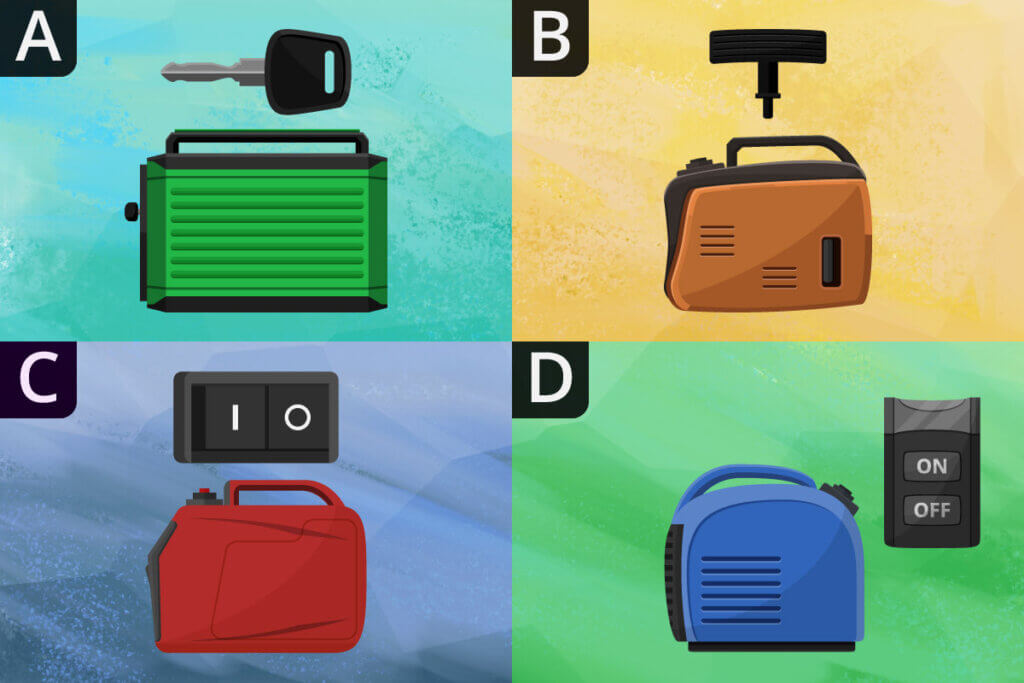
Volume
In terms of operating volume, the models differ significantly from each other. The noise emission is expressed in decibels (dB). While the quietest power generators are just under 60 decibels loud, the loudest models reach about 100 decibels. Bear in mind that the noise can disturb not only you, but also your neighbours or campsite neighbours. On some campsites, the operation of generators above a certain volume is restricted for a certain time or completely prohibited.
Doubling the volume
The decibel rating is a purchase criterion that should not be underestimated. Remember: An increase of 10 decibels corresponds roughly to a doubling of the perceived volume.
Fuel type
Almost all inverter generators for private use are petrol generators. So be sure to fill up with the correct fuel. This is usually premium petrol with 95 octane. You can find out whether the generator can run on E-10 fuel, which has been available on the market for a few years now and has a higher biofuel content, in the operating instructions.
A few very powerful inverter generators, which are considerably more expensive to buy, are powered by diesel engines. This pays off especially with frequent operation, as diesel fuel is cheaper. However, they are louder, more harmful to the environment and, in most cases, heavier.
Pump button: Pumping fuel to the carburettor
Especially after a long period of inactivity, it can happen that too little fuel reaches the carburettor because air has got into the connecting hose. On a model with a pump button, the air can be displaced by pressing the button and fuel can be pushed towards the carburettor.
Display
The display provides the user with information such as operating hours run, amount of current delivered, power, voltage or oil level. Both the amount of information displayed and the way it is presented vary from model to model. Simple generators, for example, only have a mechanical counter for the operating hours, as known from traditional electricity meters, and a light that warns when the oil level is too low. Modern versions provide some of the previously listed information on a digital display.
How do I measure the oil level and what do I need to consider when topping up?
The oil level must either be checked traditionally, as in cars, using a dipstick, or the measurement takes place electronically. You should react at the slightest sign of an oil shortage so that the engine is not damaged. When topping up, make sure the viscosity is correct and work cleanly. Spilled small amounts pollute the environment.
Automatic shut-off in case of oil shortage or overload
Sometimes the units are equipped with an automatic shut-off function that automatically switches off the engine if the oil level is too low or if there is an overload. The latter is the case if consumers with too much power in total are connected and the motor threatens to overheat. Such an automatic shutdown prevents engine damage in an emergency.
Empty weight
The weight of the unit is particularly interesting for users who often take the generator with them on trips. Almost all models are equipped with castors and handles for pushing, so that they do not have to be carried. With an unladen weight of between 20 and 50 kilograms, this is only possible to a limited extent. Very powerful models can weigh up to 90 kilograms. In addition, there is the fuel in the tank.
Dimensions
The advantage of inverter generators is their often particularly compact design compared to conventional generators. Very small models measure about 43 x 25 x 37 centimetres. Medium-sized models can reach dimensions of about 51 x 42 x 29 centimetres. Very powerful models have approximate dimensions of 70 x 52 x 44 centimetres and are correspondingly heavier.
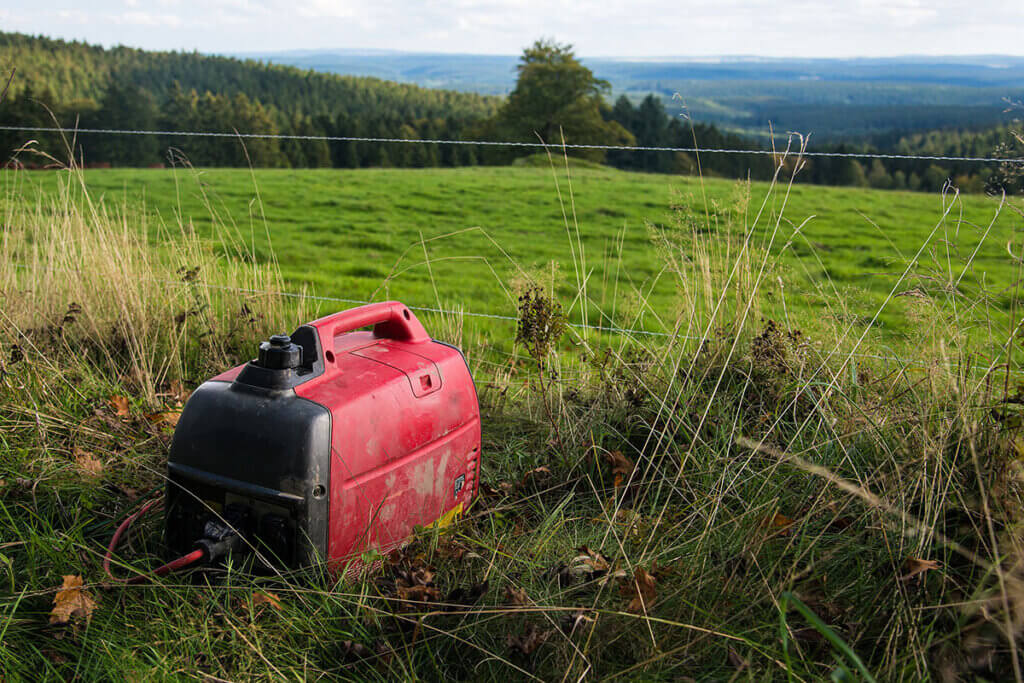
IP protection class
For electronic devices such as smartphones, but also for power generators, the protection class indicates the type of foreign bodies and water penetration the device is protected against. Not all manufacturers specify an IP protection class. If they do, it is usually class IP 23. The two digits mean that the device is protected against the penetration of foreign bodies with a diameter of 12.5 millimetres or more and against accidental finger contact. Furthermore, the IP class indicates that protection is provided against falling water spray at an angle of up to 60 degrees.
Seal: Finding particularly environmentally friendly models
If you are looking for a particularly environmentally friendly model, it is best to look for devices that have been certified with the “Blue Angel” seal. Products bearing this seal are more environmentally friendly than other models in the respective product group and thus represent a compromise between use and resource conservation in terms of environmental impact.
Colour
Housing colour is not only an optical accessory, but also a safety feature. After all, the generator is usually not meant to be hidden, but to be conspicuous by its signal colour. This reduces the likelihood of people tripping over it on campsites or of it being hit and damaged by vehicle drivers.
Accessories
The most important accessory for a power generator is probably the instruction manual. Here, users not only learn how to use the unit safely and take care of it, but also how to help themselves if something does not work. The following accessories are also useful:
Tool kit: A tool kit is handy for experienced users who want to make repairs or adjustments.
Replacement spark plug: If the engine no longer starts, this may be due to a defective spark plug. If a replacement spark plug is stowed on the unit, it can start immediately after replacement. Otherwise, you can find replacements in garages and sometimes at petrol stations.
Rubber feet: The rubber feet ensure a secure stand without slipping.
Installation and maintenance tips
Place the generator on as level a surface as possible. Since toxic exhaust gases are produced during operation, indoor use is life-threatening. Therefore, place the unit a few metres away from windows and ventilation openings outside the tent or caravan.
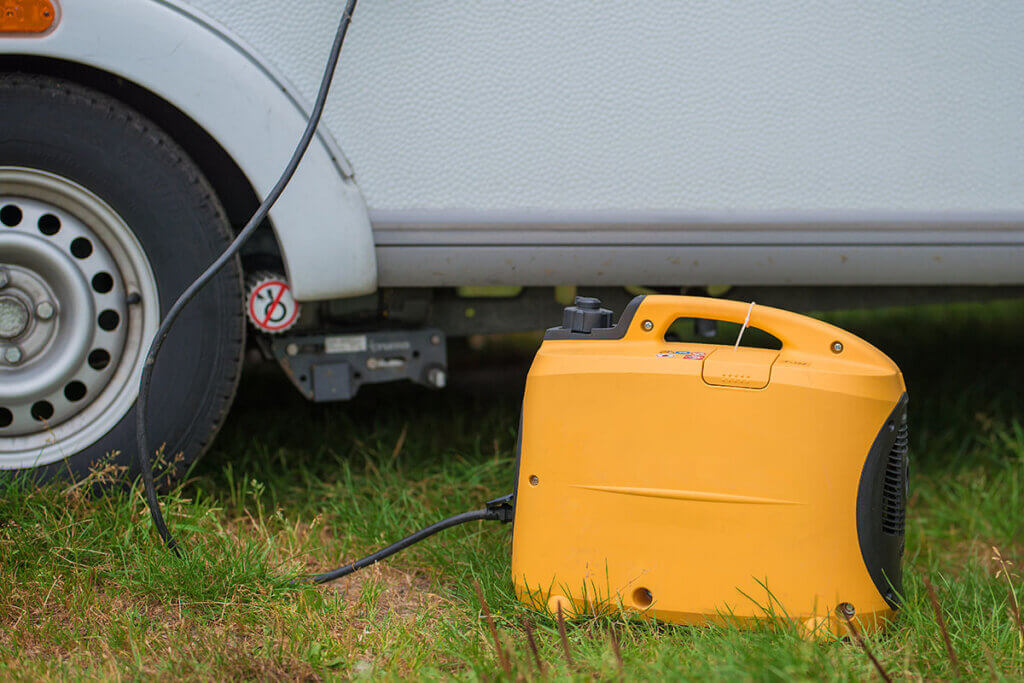
Refuelling
Refuelling should only be carried out when the engine is switched off and cooled down to minimise the risk of fire.
Oil level check and oil change
Check the engine oil level regularly to prevent damage. Regular oil changes are essential to ensure that the generator has a long service life. Refer to the operating instructions for the intervals at which this is due. If in doubt, have the oil changed by a specialist in an automotive workshop.
Checking the air filter
Regular checking of the air filter also influences the service life of the engine. Heavy contamination can lead to the filter not being able to suck in enough air. Performance deficits and increased fuel consumption would be the result. Regular checks are particularly useful in dusty environments.
The filter itself can be washed out in warm soapy water. Afterwards, rinse thoroughly and allow to dry. Do not use flammable solvents. These could cause a fire or even an explosion. If the air filter can no longer be cleaned satisfactorily, it should be replaced.
Spark plug
The spark plug should be free of deposits so that the ignition spark can be triggered correctly. Also make sure that the electrode gap is set correctly. Check the spark plug regularly for cracks or chipping on the insulator. If damaged, the plug should be discarded and replaced with a new one. If the spark plug is not screwed in tightly, it risks overheating and damaging the generator.
Fig. 1: © Tomasz Zajda / adobe.stock.com | Fig. 2: © willpower / adobe.stock.com | Fig. 3-4: © FinalCheck | Fig. 5: © Janni / adobe.stock.com | Fig. 6: © Janni / adobe.stock.com


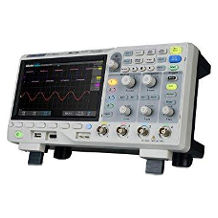
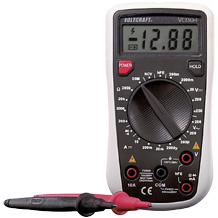
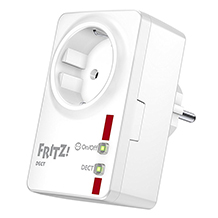
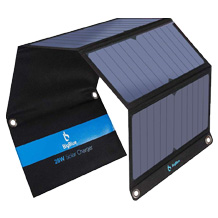
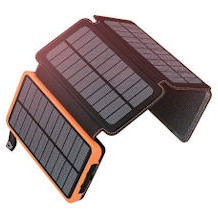

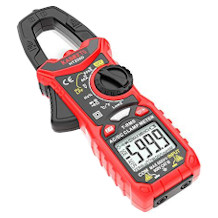
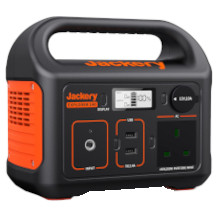
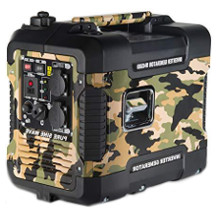
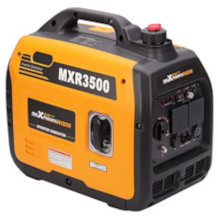
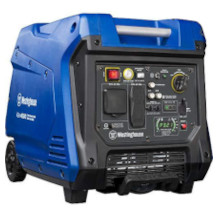


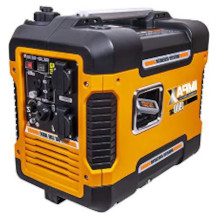
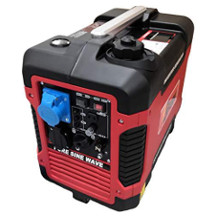
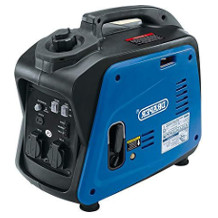


 1,024 reviews
1,024 reviews





